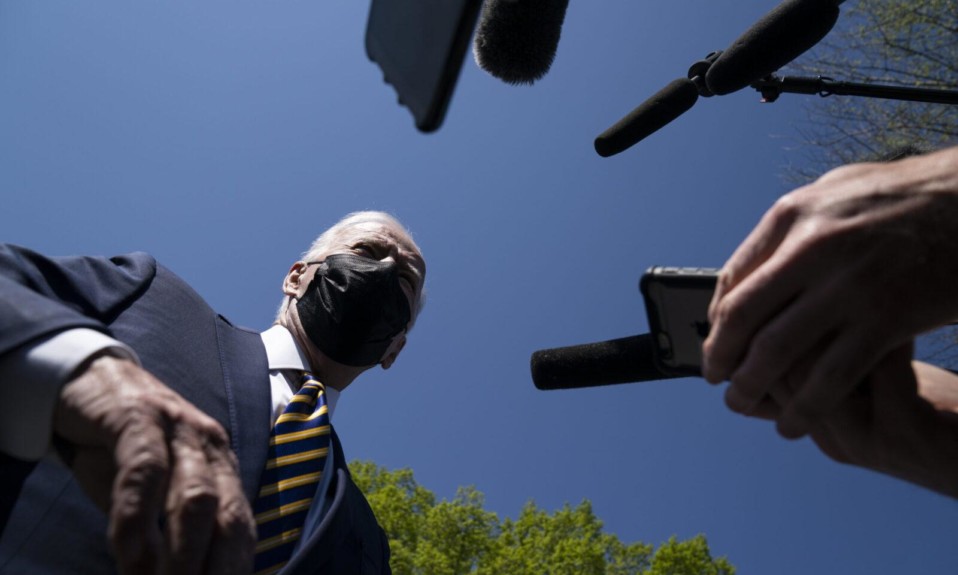The administration has set a high bar with its newly released seven-point plan
By William Wagner
April 5, 2021In February, President Joe Biden’s administration delivered its broad strokes for addressing addiction in America. Now his team is shading in the details with a plan for its first year.
“My administration is committed to expanding access to treatment, supporting prevention and recovery efforts, and reducing the supply of illicit substances coming to the United States,” Biden said on Monday in a virtual address at the Rx Drug Abuse & Heroin Summit. “The addiction crisis has taken so much, and I grieve with all those who have lost someone. We also celebrate those who are recovering. We hold them in our hearts and commit ourselves in helping more families know the joy and relief of recovery. To those still struggling, I want you to know that I see you, and we’re going to beat this thing together.”
Biden’s Addiction Plan for Year One
Biden’s first-year addiction plan was released last week by the White House Office of National Drug Control Policy (ONDCP) and is guided by seven priorities:
Expanding access to evidence-based treatment. Among the goals are to build on the recommendations made by the 2016 Mental Health and Substance Use Parity Task Force; improve medication-assisted treatment (MAT), such as by updating policies for methadone treatment and eliminating red tape in prescribing buprenorphine; make permanent the emergency telehealth provisions that were put in place during the COVID-19 pandemic; and remove discriminatory obstacles to mental health and substance use disorder (SUD) care.
My administration is committed to expanding access to treatment, supporting prevention and recovery efforts and reducing the supply of illicit substances coming to the United States.”—President Joe Biden
Advancing racial equity in drug policy. The administration’s first-year plan states, “For many people with substance use disorders, access to care in the United States is inadequate, but for Black, Indigenous and People of Color (BIPOC), the situation is worse.” To remedy this ill, the ONDCP is looking at initiatives such as identifying data gaps to better target underserved communities and developing policies for criminal justice reform.
Enhancing evidence-based harm reduction efforts. The key points in bringing this emerging treatment approach to the fore involve creating better access to syringe services programs (SSPs) and the overdose-reversal drug naloxone, honing best practices for fentanyl test strips (FTS) services, and investing in clinical research on harm reduction techniques.

Supporting evidence-based prevention efforts to reduce youth substance use. “Preventing youth substance use, including the use of alcohol, tobacco and illicit drugs, is essential to young people’s healthy growth and development,” the plan states. The ONDCP’s primary course of action will be to bolster community-based programs.
Reducing the supply of illicit substances. This has been a staple of pretty much every major federal drug program that has been put into motion over the past several decades, and with good reason. “Many of the illicit substances harming Americans are produced outside the United States and brought through the nation’s ports of entry,” Biden’s plan notes. A high-profile aspect of the administration’s work will be to strengthen the coalition with Western Hemisphere countries such as Mexico and Colombia in order to disrupt the supply chain.
Advancing recovery-ready workplaces and expanding the addiction workforce. On both these counts, there is much to do. The workplace element includes a number of proposals to remove barriers to employment for people in recovery, and to provide support for private and public employers. The workforce part includes initiatives such as bringing more bilingual professionals into the field and training clinicians to provide community-based services in underserved areas.
Expanding access to recovery support services. Judging from its plan, the Biden administration seems to understand that treatment is only the first step in the recovery process: “As we expand the continuum of care to address the chronic nature of substance use disorders, recovery support services help people build recovery capital to manage and sustain long-term recovery.” The administration is aiming to better develop protocols for recovery housing, including certification, payment models and evidence-based practices.
These priorities lay out the aggressive, evidence-based, whole-of-government response that we need to implement in the first year of this administration in order to bend the curve.”—Regina LaBelle, acting director of the ONDCP
Time Is of the Essence for Biden’s Addiction Plan
Biden’s plan comes on the heels of the nearly $4 billion allocated to mental health and addiction treatment in the $1.9 trillion American Rescue Plan Act. Carrying out the plan’s wide range of initiatives is certain to be a heavy lift, but Regina LaBelle, acting director of the ONDCP, believes inertia isn’t an option, especially given the complications that have arisen from the pandemic.
“The COVID-19 pandemic has exacerbated the addiction and overdose epidemic, leaving many families and communities hurting,” she said upon the release of the administration’s plan. “These priorities lay out the aggressive, evidence-based, whole-of-government response that we need to implement in the first year of this administration in order to bend the curve.”
Top photo: AP Images; bottom photo: Amritanshu Sikdar














